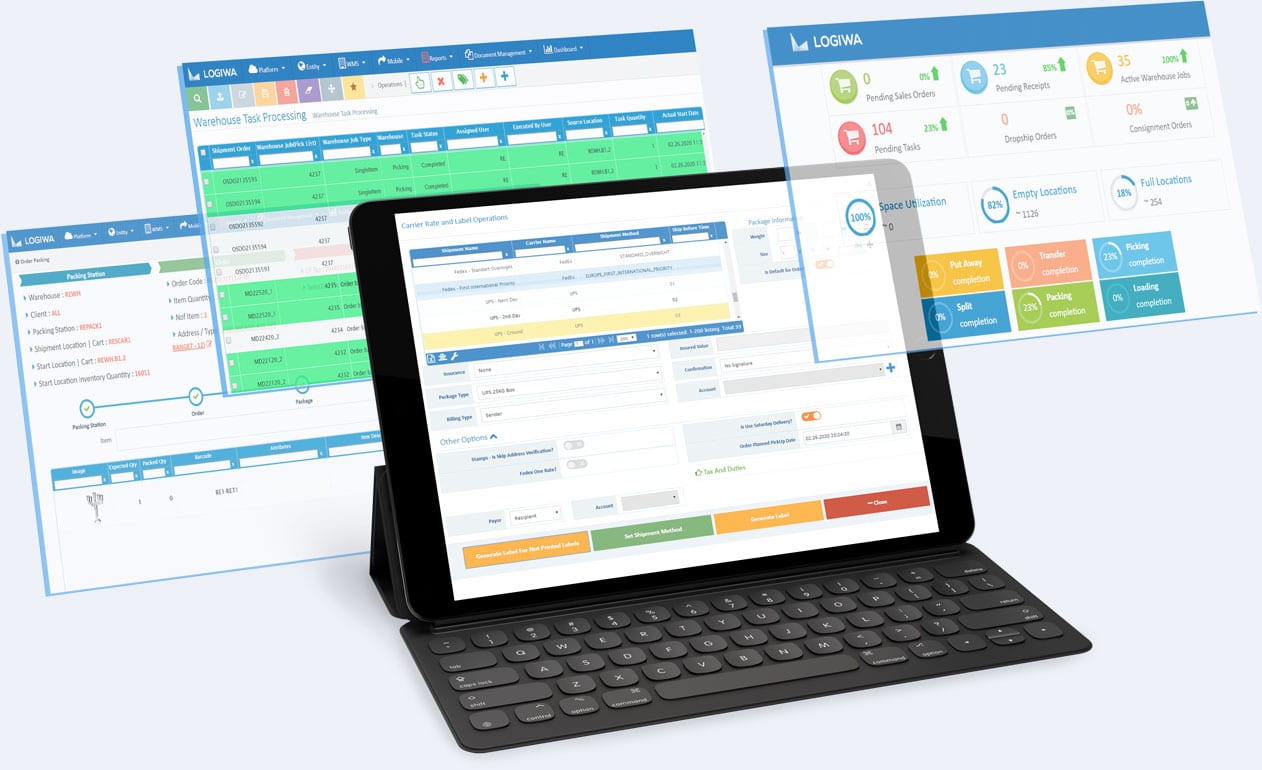Peak season is a crucial time for brands, online sellers, fulfillment networks and third-party logistics (3PLs) providers, but it presents as many challenges as it does opportunities. With the right strategies and preparation, warehouse operations can meet high-volume DTC demand efficiently and the industry’s increasingly competitive fulfillment expectations.
The key is planning. In order to have a successful peak season, operations need to use the time leading up to high-volume months to their advantage. In this blog, Logiwa has compiled a comprehensive warehouse checklist to aid in peak season planning and ensure a profitable outcome when the time finally arrives.
Key Takeaways:
- The cyclical trends that accompany peak season provide a framework for preparing for it.
- Before peak season arrives, it is crucial that you take the time to prepare your facilities, assess inefficient processes, and upgrade outdated or limited technologies.
- Using Logiwa’s comprehensive peak season planning checklist, you can ensure that your DTC fulfillment operations run smoothly during high-volume periods.
- Key areas to prepare for peak season include: warehouse infrastructure, equipment and supplies, software, inventory, labor, shipping, metric tracking, and contingency plans.
- Logiwa WMS enhances peak season results by optimizing warehouse performance, streamlining order fulfillment, and ensuring visibility and control over high-volume operations.
Contents
Peak Season Planning for High-Volume Success
Peak season presents countless challenges for modern ecommerce operations. Fortunately, the cyclical trends that accompany it provide a framework for how to prepare for it. Peak season planning requires you to evaluate each aspect of your business, especially the weak points in your operations.
Before peak season arrives, it is crucial that you take the time to prepare your facilities, assess inefficient processes, and upgrade outdated or limited technologies. Once orders start pouring in, it is too late and risky to disrupt operations. Whether it is the structure of your warehouse, the systems supporting your operations, or the strategies in place for fulfilling orders – it is important to set you and your team up for success as early as possible.
Peak Season Warehouse Checklist
Preparing your warehouse for the peak season is a multifaceted endeavor that requires careful planning and execution. By following this comprehensive checklist, you can ensure that your DTC fulfillment operations run smoothly during high-volume periods.
Infrastructure and Layout:
Equipment and Supplies:
Software Solutions:
Demand Forecasting and Inventory Management
Labor Planning:
Shipping and Delivery:
Performance Metrics and Analysis:
Contingency Planning:
Tackle Peak Season Planning with Logiwa WMS
Peak season necessitates planning on every level. With the right strategies and technologies in place, your business can thrive during this time and deliver exceptional experiences to customers. Having a fulfillment system that optimizes warehouse performance, streamlines order fulfillment, and ensures visibility and control makes it even easier. Logiwa WMS has helped countless warehouse operations scale their peak season results.
Logiwa’s cloud-based fulfillment platform was built with the challenges of high-volume DTC fulfillment in mind, utilizing smart automation, seamless integrations, and highly configurable order management features to help businesses surpass their goals year-round. For more insights on how Logiwa can elevate your peak season performance, check out our blog, “Logiwa is Ready for Ecommerce Peak Season… Is Your Warehouse?” or download our Driving Impactful Peak Season Results ebook.

Transform your warehouse to a DTC fulfillment center
FAQs Related to “Peak Season Warehouse Operations”
What is peak season?
Peak season is the time of year when consumer demand spikes and fulfillment networks experience higher order volumes. It is a period where businesses managing supply chains, warehouses, and fulfillment operations face increased market pressures and logistical challenges.
What are peak season warehouse operations?
Peak season warehouse operations are those processing high-volume demand stemming from seasonal spikes in in-person and online shopping. If operating efficiently, they process more orders and deliver increased throughput as a result of streamlined fulfillment processes.
Why is peak season planning important?
Without peak season planning, warehouses and fulfillment networks are unable to process the high order volumes brought on by heightened consumer demand. This results in stock shortages, late deliveries, supply chain issues, profit losses, reputational damage, and stunted growth.
What are the key areas to focus on for peak season planning?
Warehouse planning for peak season should include: warehouse layouts and infrastructure, facility equipment and supplies, software solutions, various aspects of inventory management, labor planning, demand forecasting, shipping operations, metric tracking, and contingency plans.
Run a fully digital warehouse with mobile apps, smart job batching, automation rules
Warehouse Management
Modern digital WMS powers a modern fulfillment experience






